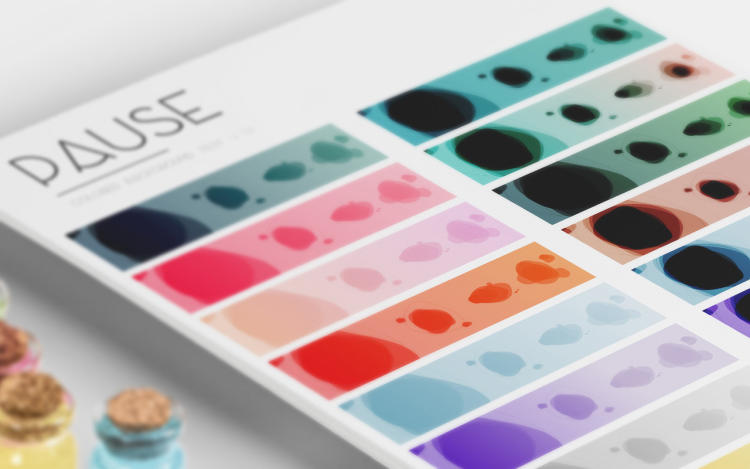At the end of a long, stressful day, sometimes all you want to do is turn off your brain, but your phone is the worst escape. It’s holding emails to be answers, newsy tweets to be read, Facebook posts to piss you off, and—truth be told—even an unfair level of a game like Candy Crush can be the straw to break the psyche’s back.
Ustwo’s Nordic studio, teaming with the Danish mental wellness company PauseAble, has developed an interesting cure to the daily cortisol drip. It’s a $2 iPhone app called Pause, and it’s designed, not to suck you into a social network or addict you like a video game, but to offer you just enough stimulation to help your mind go numb.
“How we can do that is inspired by the Tai Chi movement,” explains PauseAble founder Peng Cheng. “It’s a martial artform. You can summarize the movement quality as slow, continuous, gentle movements. It’s deliberate movement from moment to moment that’s very special and different from everything else we’re doing in life. And that movement anchors attention away from our stressful thoughts. So we borrowed that idea and applied to the touch screen in the mobile phone.”
In other words, Pause is like Tai Chi for your thumb. You touch the screen, and you’ll hear a calming soundtrack infused with ocean waves, while an oil-like blob slowly condenses around your thumb. You have to move it—not too fast, and not too slow—all the time for the experience to continue. (Stop, and it just fades out.) After about a minute, the app tells you to close your eyes, and the phone becomes something akin to a set of prayer beads—requiring slight but constant tactile attention that can put your mind into a meditative state.
It works. In fact, I found that, as silly as it sounds, I was incapable of thinking through complex problems while moving my thumb across the screen. And this is very much by design. In fact, UsTwo iterated the design to stimulate your brain less. They donned EEG machinery, which scanned their brains for activity, to test and prove out their precise alchemy of UX over time.
“We started out with a very realistic sort of experience, a little bit more playful and game like, pulling a buoy to the bottom of an ocean,” Cheng explains. “But we noticed that actually takes a lot of attention from the user. It’s actually a heavy perceptual load. We needed to go the opposite direction, to give a light, aerial, subtle experience.”
Eventually, Peng turned to Dr. Chi Thanh Vi, Human-Computer Interaction Researcher at the University of Sussex, to validate the developer’s findings through (more) controlled EEG testing. What he found was, unbelievably, that Pause not only relaxed someone’s mind more than playing Ustwo’s popular, quietly atmospheric game, Monument Valley, but more than simply relaxing with your eyes closed on the couch.
“Our explanation is, why Pause is working better [to relax you] than Monument Valley, is quite obvious. In Monument Valley you have to make choices and decide. There may be frustrations. If you’re sitting on a sofa, eyes closed, you’re physically trying to relax, but your mind is active,” Cheng says. “Pause has the lowest mental workload. Our [belief] is that it pulled attention away from these thoughts so the mind is more calm.”
Having tried Pause for myself, I wasn’t immediately convinced that I’d choose to load it rather than sneaking a 10-minute powernap. I’m honestly not sure if I’ll load it again. But I’ll keep the app on my phone all the same—much as I have Ustwo’s cognitive behavior app Moodnotes—if for no other reason than a reminder that, with all of the apps vying for my attention, maybe it’s worth having some apps that turn their attention back to me.
“Technology and mobile phones are often blamed for causing stress,” says Marcus Woxneryd, studio head at Ustwo Nordics. “By creating this product, we’ve taken a first step in turning that assumption on its head. This is a starting point in exploring those assumptions in more detail.”
